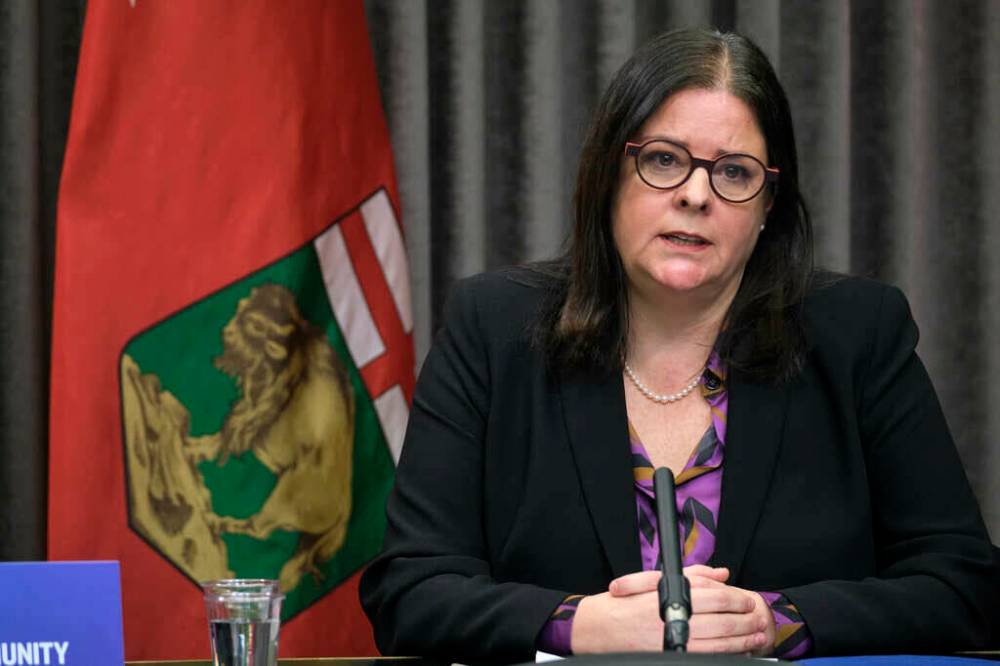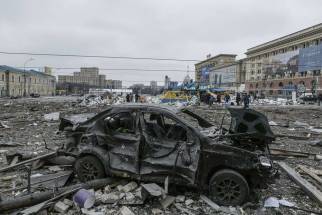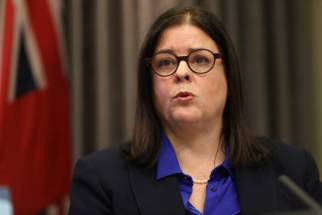Government must propel return to ‘normal’
Read this article for free:
or
Already have an account? Log in here »
To continue reading, please subscribe:
Monthly Digital Subscription
$0 for the first 4 weeks*
- Enjoy unlimited reading on winnipegfreepress.com
- Read the E-Edition, our digital replica newspaper
- Access News Break, our award-winning app
- Play interactive puzzles
*No charge for 4 weeks then price increases to the regular rate of $19.00 plus GST every four weeks. Offer available to new and qualified returning subscribers only. Cancel any time.
Monthly Digital Subscription
$4.75/week*
- Enjoy unlimited reading on winnipegfreepress.com
- Read the E-Edition, our digital replica newspaper
- Access News Break, our award-winning app
- Play interactive puzzles
*Billed as $19 plus GST every four weeks. Cancel any time.
To continue reading, please subscribe:
Add Free Press access to your Brandon Sun subscription for only an additional
$1 for the first 4 weeks*
*Your next subscription payment will increase by $1.00 and you will be charged $16.99 plus GST for four weeks. After four weeks, your payment will increase to $23.99 plus GST every four weeks.
Read unlimited articles for free today:
or
Already have an account? Log in here »
Hey there, time traveller!
This article was published 01/03/2022 (1376 days ago), so information in it may no longer be current.
Premier Heather Stefanson says it’s time for Manitobans to return to normal life. It’s a mantra the premier has repeated several times in recent weeks, as the province winds down the last of its public-health restrictions.
As COVID-19 case counts fall and hospital admissions decline, Ms. Stefanson says it’s time for Manitobans to get their lives back. That is something everyone wants, but it is not going to occur magically overnight, not without strategic planning and supports from government.
Hospital operations have been ravaged by the pandemic. Health-care staff, many of whom have worked double duty and have been redeployed to medical wards or intensive care units, are exhausted. Tens of thousands of elective surgeries, medical screening procedures and diagnostic tests have been cancelled or delayed.
Hospitals are severely short-staffed in many areas. They cannot simply “return to normal” without a robust transition plan and significant government funding to repair the damage caused by the pandemic.

Nor can many businesses and not-for-profits pick up where they left off before the pandemic turned their operations upside down. Some have gone bankrupt, others have seen their bottom lines decimated by the pandemic, in large part from successive shutdowns or other government-mandated restrictions.
Many face mountains of debt and severe staffing shortages. According to the Canadian Federation of Independent Business, close to two-thirds of Manitoba small businesses have taken on additional debt from the pandemic.
Municipal governments have also been hard hit, as expenditures have soared and revenues plummeted over the past two years. The pandemic’s net impact on the City of Winnipeg is well over $200 million. Winnipeg Transit is still operating with only half its normal ridership.
The premier and her Progressive Conservative government will have a chance to address those and other pandemic-related challenges when the legislative assembly resumes sitting this week for the first time since the house adjourned on Dec. 2.
Returning to normal will not be as simple as flipping a switch and declaring that life is back to the way it was prior to the pandemic.
Hospital capacity must be expanded, including hiring more staff and adding medical and ICU beds, so health-care facilities are better equipped to handle patient surges. A detailed plan, with specific targets, to reduce the massive surgical and diagnostic testing backlog must be unveiled.
There is much work to be done before the province can declare a return to normal life.
Businesses and not-for-profits require support to make the transition back to normal life. Kick-starting the economy should be one of government’s top priorities as the house resumes sitting.
Meanwhile, public schools and child-care centres require supports to ensure their facilities are better equipped to mitigate the spread of infectious diseases, including much-needed upgrades to air filtration systems. Municipalities require bridge funding to help them weather the fiscal storm. Infrastructure projects across the province (many of which were delayed during the pandemic) also need to be accelerated to help the province get back on track.
There is much work to be done before the province can declare a return to normal life.
The Stefanson government announced in its November throne speech that it has a “bold agenda” to invest in “critically important areas, such as health care, infrastructure and the economy.” What government has not said is how much it’s prepared to spend in those areas, or where funding will be targeted.
Many of those questions will be answered when government unveils its 2022 budget, expected in the coming weeks. Manitobans will learn then how much government plans to help the province return to normal life, and how much was simply wishful thinking on the part of Ms. Stefanson.









